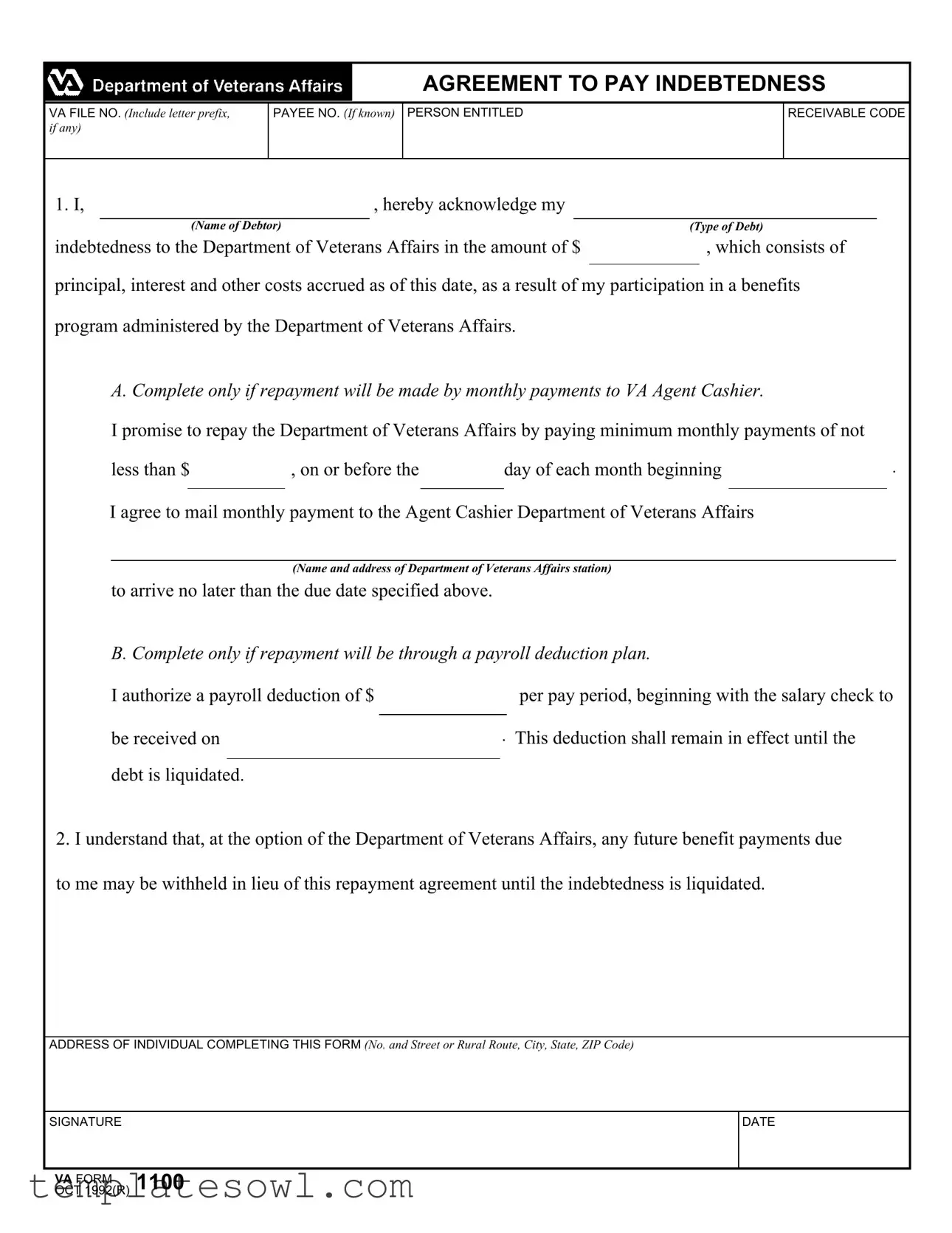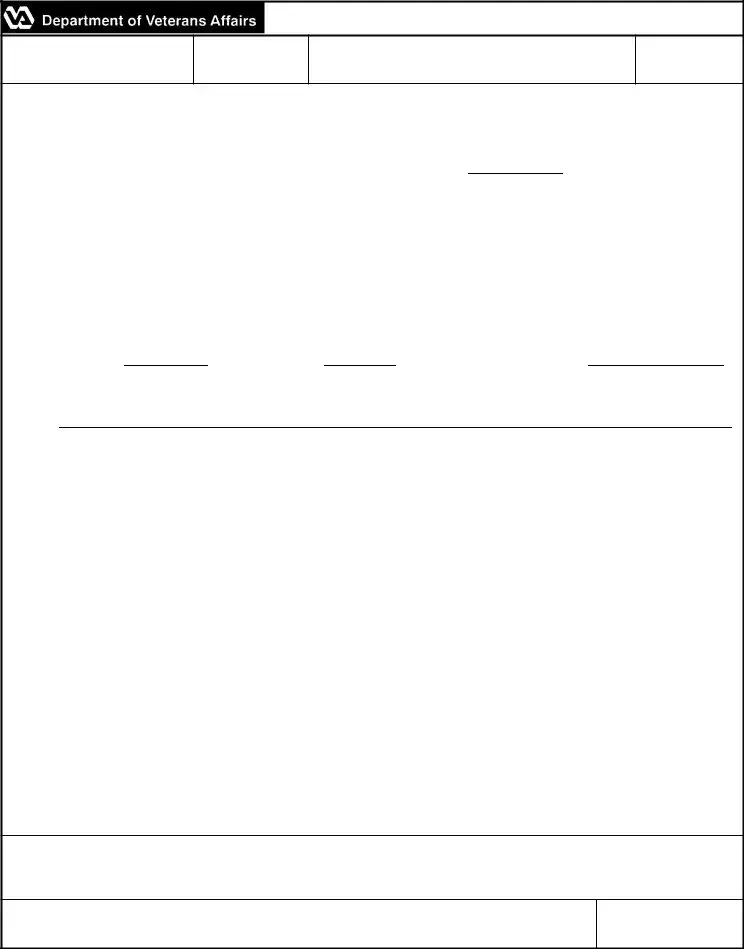What is the 1100 form?
The 1100 form, officially known as the "Agreement to Pay Indebtedness," is used by individuals who owe money to the Department of Veterans Affairs (VA). This form is crucial for acknowledging a debt, which could arise from various benefits programs that the VA administers. It outlines the terms of repayment, whether through monthly payments or payroll deductions.
Who needs to fill out the 1100 form?
This form is typically required for veterans, dependents, or beneficiaries who have accrued a debt to the VA. If you receive a notice of indebtedness from the VA, completing this form is an important step in managing your financial obligation.
What information do I need to provide on the 1100 form?
You will need to enter your name, information about the type of debt, the amount owed, and your address. Additionally, you must specify your repayment plan, whether it will involve monthly payments or payroll deductions, and provide details on the payment amount and schedule.
Can I choose how to repay the debt?
Yes, the 1100 form allows you to choose between two repayment methods. You can either schedule monthly payments sent directly to the VA or set up a payroll deduction from your paycheck. Both options offer flexibility depending on your financial situation.
What happens if I do not follow the repayment agreement?
If the repayment agreement is not honored, the VA has the option to withhold future benefit payments until the debt is fully repaid. This means it is critical to adhere to the terms outlined in the form to avoid additional financial consequences.
How do I submit the 1100 form?
The completed 1100 form should be mailed to the appropriate VA office, which is specified in the instructions on the form. Ensure that you send it to the correct address and that it is sent well before any payment due dates.
Is there a deadline for submitting the 1100 form?
While a specific deadline may not always be explicitly stated in a notice of indebtedness, it is advisable to submit the form as soon as you receive the debt notice. Timely submission ensures that you can start negotiating your repayment plan without delays.
Can I modify my repayment plan after submitting the 1100 form?
Yes, if your financial situation changes, you can reach out to the VA to request a modification of your repayment plan. It's important to communicate openly with the VA to prevent misunderstandings and ensure compliance with your repayment obligations.
What should I do if I have questions about the form or the debt?
If you have questions regarding the 1100 form or your specific debt situation, you should contact the VA directly. They have resources available to assist you and can provide guidance tailored to your needs.
Where can I find a copy of the 1100 form?
The 1100 form can typically be found on the VA’s official website or obtained from VA offices. Make sure to use the most current version to ensure your submission meets all required standards.

